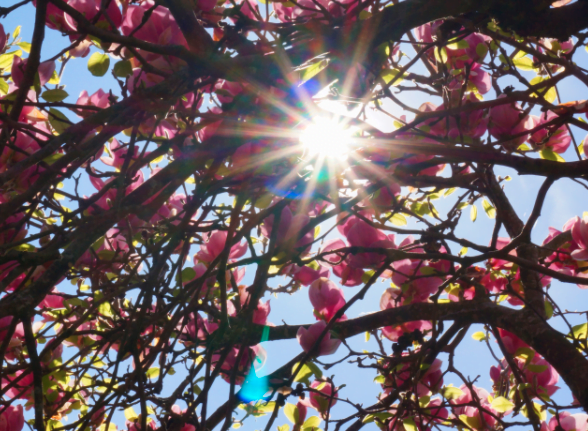India has a “Tropical Monsoon” kind of environment. This implies there are contrast sorts of seasons in India like Winter, Spring, Summer, and Monsoon. This is on the grounds that a larger piece of India lies in the equatorial jungle area and its environment is more prominently impacted by the storm winds.
Seasons In India – Spring, Summer, Pre-Winter, Winter, Autumn and Rainy

India is one of only a handful few nations that face a lot of varieties regarding seasons. An aggregate of six seasons is found in India. Furthermore, the force of each season changes holding tight the territory and different factors like geography, scope, longitude, and so forth.
The Lunisolar Hindu schedule depicts six unique kinds of seasons in India over time for example Spring: Vasant Ritu, Summer: Grishma Ritu, Monsoon: Varsha Ritu, Autumn: Sharad Ritu, Winter: Shishir Ritu. Since the Vedic time frame, people groups across India and South Asia have been utilizing this Lunisolar Hindu schedule to structure their lives.
These old Indian schedules are utilized in India, Bangladesh, Nepal, and Sri Lanka; some steadfast people actually put stock in this schedule, for exceptionally significant Hindu celebrations and strict events, each season comprises two months and six seasons.
SPRING SEASON IN INDIA (VASANTA RITU)
The spring season in India is in the long stretches of March and April, it is considered one of the delightful seasons in the country. The normal temperature in spring is 32 °C. Spring is the season after winter and before summer. The days become longer and the climate warms up, days become longer and evenings become more limited in these seasons.

Spring influences the greenery as well as the creature world. The entire fauna shows up with another skeleton. The human local area emerges from the front of the blanket bed sheet and woolen fabric and takes sound dressing. The people groups are loaded up with new energy. It is the image of the rapture, the celebration of Vasant Panchami and Holi.
At the point when the leaves of trees fall, when new leaves arise, when buds play their sorcery, when butterflies and eyebrows brighten them, it is the spring season. Being away from nature, man can’t perceive the scent of his dirt, and still, after all, that the spring spreads its shadow if somebody values it.
SUMMER SEASON IN INDIA (GRISHMA RITU)
The mid-year season in India is between the period of Jyeshtha and Ashadh and as per the English schedule, it happens in May and June. Summer is the season in the wake of spring and before the monsoon.
Summer is the most blazing season, which comes subsequent to spring and before fall. The days are the longest and the evenings are most brief. The normal temperature in summer is 38 °C.

For the most part, its temperature ascends from the long stretch of March to its top in May and June. At the point when the Sun moves from the equator towards the Tropic of Cancer, its temperature begins to ascend, after the Indian celebration of Holi, the warmth of the sun begins rising. This means that the appearance of the late spring season in India.
The water of streams, lakes, wells begins evaporating and the water level beginnings diminishing. Because of the warmth, creatures, birds, and people, all begin to feel distressed.
Disturbed by the warmth of the sun, the animals start to look for hiding, animals like a snake, peacock, tiger, and so on are upset by summer, failing to remember their shared disdain and resting in one spot.
MONSOON SEASON IN INDIA (VARSHA RITU)
Monsoon season in India is the season when the normal precipitation happens in a large portion of the zones in the country. The season generally endures between the period of July and August.
The term ‘green season’ is now and again utilized as an equivalent by the travel industry authorities. The days are short and the evenings are long, the normal temperature in summer is 34 °C.

The appearance of the Rainy seasons is essentially connected with the rainstorm; it is called as sovereign of the period. During the stormy season, the earth begins to cover itself with a sheet of greenery.
All plants begin blooming with a cool breeze. Birds make sweet melodies in the woodlands, the quick streaming water of waterways and lakes crushes the wonder of a downpour.
Trees and plants are covered with new leaves; ranchers take furrows and go out to the fields. In this greenery on the earth, celebrations like Nagpanchami, Rakshabandhan, Ganesh Chaturthi, and so on are delighted in.
AUTUMN SEASON IN INDIA (SHARAD RITU)
The Autumn season in India is the season when the leaves tumble off the trees, and the tones are stunning. It is likewise called the fall season. The season ordinarily endures between the period of September and October.
Pre-winter is the season after the stormy season and before the pre-winter season. Day and night have a similar length and the normal temperature in fall is 33 °C.

With the appearance of the fall season, nature turns out to be unadulterated and beautiful. The light of the twilight of the typical moon injects the entire earth, at that point the earth and the sky, the unadulterated and cool evening glow is seen all over!
The darkness of the mists is eliminated from the sky, the unmistakable moon resembles a splendid look.
WINTER SEASONS IN INDIA (SHISHIR RITU)
The colder time of year season in India is the coolest period of the year, ordinarily keeps going between the long stretch of January and February.
The winter name comes from an old Germanic word that implies the hour of water and alludes to the downpour and snow of winter in the center and high latitudes. Winter is the season after pre-winter and before the spring season and the normal temperature in harvest time is 23 °C.

In this season, the climate is influenced via pneumatic stress. The focal point of high pressing factor creates in the northern area of the Himalayas and from here the breezes begin streaming towards the Indian subcontinent. This breeze comes to as the dry mainland wind framework.
Right now, the temperature in the fields of northern India arrives at 18 ° C, yet because of the breeze moving the south way, the temperature increments because of the proximity to the sea and tropical conditions. The temperature of the fields of northern India goes up to 10 ° C.